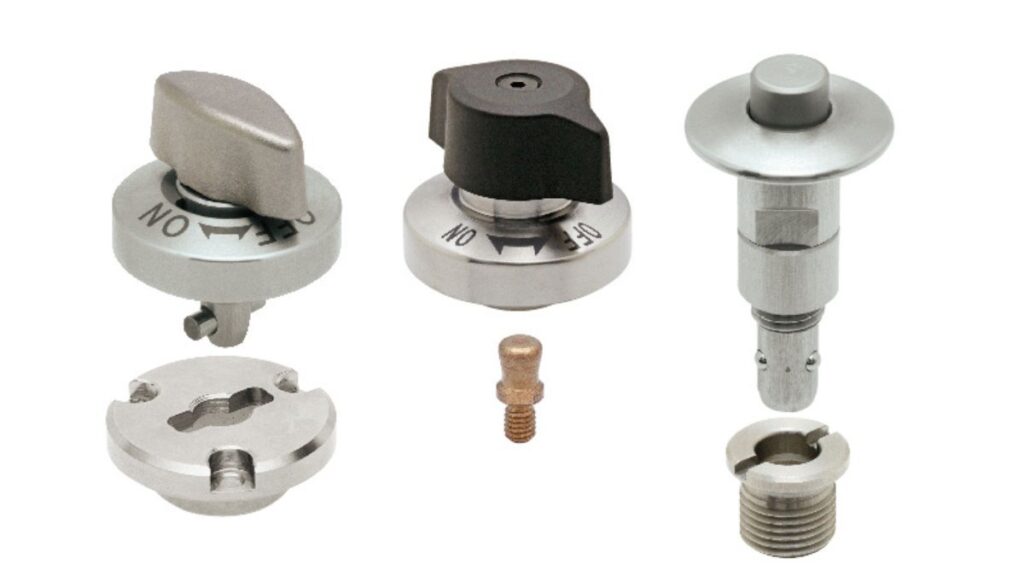In the world of mechanical assemblies, efficiency and ease of use are paramount. Whether it’s for automotive, industrial, aerospace, or even household applications, the ability to quickly assemble and disassemble components without specialized tools can significantly reduce downtime and labor costs. This is where the humble wing nut comes into play—a small but powerful piece of hardware that plays a big role in enhancing operational efficiency.
What is a Wing Nut?
A wing nut is a type of fastener with two large metal “wings” on either side. These wings allow the nut to be easily tightened or loosened by hand, without the need for tools. Typically made of metal or plastic, wing nuts come in various sizes and thread types to suit a wide range of applications.
The Core Advantage: Tool-Free Operation
The most obvious benefit of a wing nut is that it can be operated by hand. In quick-release assemblies—where parts need to be frequently removed and reattached—this feature is invaluable. Unlike standard hex nuts that require wrenches or pliers, wing nuts streamline the process:
- Faster Installation: Assembly workers or technicians can use their fingers to secure components quickly.
- Simplified Maintenance: No tools are required to dismantle the setup for repair, inspection, or transport.
- Improved Accessibility: Even in tight or awkward spaces, the wings provide the leverage needed to rotate the nut efficiently.
Applications Where Wing Nuts Excel
Wing nuts are ideal for applications that prioritize speed, convenience, and repeatability. Some common use cases include:
- Lighting Equipment: Stage and studio lights often use wing nuts to attach fixtures to stands, allowing quick setup and breakdown.
- Automotive Panels: In motorsports, time is critical. Wing nuts are used to secure panels or access covers that mechanics need to remove quickly.
- Furniture Assembly: Flat-pack furniture sometimes uses wing nuts to simplify home assembly without tools.
- Event Staging: Temporary structures such as tents, signage, or booths frequently employ wing nuts to enable fast assembly and disassembly.
In each of these cases, using wing nuts directly reduces the time required to perform repetitive tasks.
Enhancing Ergonomics and Worker Safety
One of the lesser-discussed advantages of wing nuts is their ergonomic design. The broad, wing-like extensions reduce the amount of torque needed to achieve a secure connection. This ease of use leads to:
- Less Strain on Hands and Wrists: Ideal for workers who handle multiple fasteners daily.
- Lower Risk of Injury: Since no tools are needed, the chance of cuts or bruises from slipping wrenches or screwdrivers is minimized.
- Better Precision: Hand-tightening gives users more control, especially in delicate assemblies where over-torquing could cause damage.
By improving worker comfort and safety, wing nuts indirectly contribute to better productivity and job satisfaction.
Cost-Efficiency and Reusability
Another advantage of using wing nuts in quick-release assemblies is their cost-effectiveness. Though slightly more expensive than standard nuts, wing nuts:
- Save Time: The quicker assembly time translates to reduced labor costs.
- Are Reusable: They can be repeatedly tightened and loosened without significant wear, making them ideal for temporary setups.
- Reduce Tool Investment: With wing nuts, fewer tools are needed on the job site or manufacturing floor.
In operations where equipment is frequently moved, adjusted, or maintained, these small savings add up significantly over time.
Customization and Material Choices
Wing nuts come in a range of materials to suit specific industry needs:
- Steel or Stainless Steel: For high-strength, corrosion-resistant applications.
- Brass or Aluminum: For lighter-duty applications requiring aesthetic appeal or electrical conductivity.
- Plastic: For non-conductive environments or where lightweight hardware is preferable.
Some manufacturers even offer ergonomic wing nut designs with extended or curved wings for greater hand comfort, or textured surfaces for better grip. This customization allows wing nuts to be tailored for high-efficiency roles across different sectors.
Conclusion: Small Part, Big Impact
In summary, wing nuts may seem like a minor component, but their impact on efficiency in quick-release assemblies is undeniable. Their tool-free operation, ease of use, ergonomic benefits, and reusability make them indispensable in scenarios where speed and convenience are crucial. Whether you’re setting up a trade show booth, maintaining industrial machinery, or securing parts in an aerospace system, choosing the right wing nut can dramatically enhance your workflow.
In an age where every second and every penny counts, the wing nut proves that sometimes the simplest solutions are the most effective. For anyone looking to improve turnaround time, increase flexibility, or reduce tool dependence in assembly processes, wing nuts offer a smart, scalable solution.






